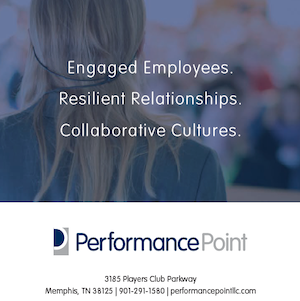By Brad Federman
We live in a world of uncertainty. Companies today are biting off more than ever including social change. They are producing promises related to all their stakeholders including shareholders, customers, employees and society at large. Brand promises are the language of business. Those promises, in many cases, fall short. How do people know when a company can’t keep its promise? Experience. Experiences are where promises are actually made or broken.
A promise is a pledge specifically a pledge to deliver on something. Companies make promises all of the time. However, certain organizations outline their promises more clearly and live up to those promises more consistently than others. Some of the more interesting and successful promises include:
- Coca-Cola: “To inspire moments of optimism and uplift.”
- BMW: “The Ultimate Driving Machine”
- H&M: “More fashion choices that are good for people, the planet and your wallet.”
- Starbucks: “To inspire and nurture the human spirit – one person, one cup and one neighborhood at a time.”
- Marriott: “Quiet luxury. Crafted experiences. Intuitive service.”
What makes a strong Brand Promise that has staying power?
- It must be measurable. What does “Ultimate” mean? What does “luxury” mean? If it can’t be defined it can’t be measured. If it can’t be measured it can’t be managed or verified. Without measurement a company cannot provide consistency in experience.
- It must be consequential. A promise does not mean much if there is no significance. It must be meaningful and unique to the marketplace for it to matter. The way to determine if your Brand Promise is significant is to ask the question, “Does it provide a reason for customers to choose and stay with us over our competitors?”
- It must be lived. A promise must lead to an experience that matches the promise. If the promise is incongruent with a person’s experience the promise is broken which leads to a loss of trust.
We all want to be a customer-centric business. It is a worthwhile endeavor. It provides a real competitive advantage. What we must realize is that we are making a promise to our customers, but that it also transcends our customers. That promise is also seen and heard by the broader community and our employees. A promise such as this requires investment. That investment starts with focusing on your customers and customer relationships, however, it does not end there. Here are just a few of the questions that must be answered:
- Question 1: Do you plan each stage of your customer’s journey? Do you have a customer journey map? It’s critical to improving the customer experience. The output of this question is relevant to re-engineering a business to be more customer centric and can impact the survey effort or customer experience program.
- Question 2: Do you know how much effort a customer must put into working with you to be successful? Being a customer should not be hard. Reducing the effort customers must make to be in a successful relationship with you creates a real ease of doing business. Creating positive experiences depends on making the customer relationship have less friction.
- Question 3: Do you measure how customer centric your culture is? We think measuring customer relationships is an external concept, but measuring and supporting how people think internally is the key to making it come to life. In the end being customer centric is not an outward journey but an inward one.
- Question 4: What KPI’s have you developed regarding the customer experience? How were they developed? Are they reflective of what your organization sees as important and more importantly what the customer sees as important?
- Question 5: What is your follow up to customers based on their feedback? How do you communicate what you have learned and are doing to better serve them? They deserve to know that their feedback is heard and will make a difference. They need to know that you are making your promise dynamic and a living, breathing promise. Otherwise they will begin to see it as stale and out of sync with today’s business environment.
The answers to the above questions not only shed light on the actual customer experience and changes that need to be made to create a more powerful and sustaining promise, but they equally shed light on internal organizational changes and investments that must be made. The answers may also provide insights into necessary budgetary shifts and investments needed in the community or communities your organization belongs to and is a part of if your promise is to truly come to life.
What happens when an organization does not deliver on its brand promises?
- United Airlines invited its customers to “fly the FRIENDLY skies,” but suffered a social media nightmare when video was released of a passenger being forcefully dragged from a flight unjustly.
- AT&T promised to “deliver the extraordinary experience our customers deserve,” but suffered major blowback for offering unlimited data but secretly capping the data speed after a certain amount was used.
- Ford consistently touts that “Quality is job one,” but have lost the confidence of many consumers with countless cases of defects with their vehicles.
Promises are not just empty statements, they are a reflection of your integrity. Companies that lack attentiveness to the adherence to the words that were used to represent themselves places them in a precarious situation. Not only can bad promises lead to possible financial disaster for a business, but it can result in a purgatory of struggle due to permanent damage of customer trust. In addition, employees that are not in environment or culture of integrity have no incentive to promote brand recovery. In fact, let’s delve deeper into the actual role of the employee in customer experience.
A truly customer driven experience, however, is not solely achieved by addressing the outward culture of the brand. Organizations frequently tend to overlook the potency of the employee experience and how it, in turn, galvanizes the customer experience. Engaged employees can deliver a direct transference of trust to a consumer. Employees are a tangible representation of the values of an organization, allowing them to be a true embodiment of its brand promises. If a consumer deduces that employees are willing ambassadors of the brand; the consumer feels confident that the same promises will hold true for themselves.
A 2013 Gallup study of the American workplace revealed that when organizations successfully engage their customers AND their employees, they experience a $240 million boost in performance-related business outcomes when compared to organizations that were unable to achieve the same dual-focused engagement. Studies such as the aforementioned example are evidence that employee engagement should not be approached as an ambiguously abstract entity that has no legitimate bearing on the overall prosperity of a company.
It is imperative that businesses develop and execute an inward brand strategy that targets the wellness of its staff while fostering your employee’s ability to make your brand’s promise a reality in your customer’s eyes. Promises that are presented to the consumer should be alive and well in the workplace simultaneously. The amount of time and energy utilized to measure and track the customer experience should be equally allotted to the employee experience. In essence, an effective way to practice methods of delivering promises to consumers is to deploy similar and related efforts with your team.
A recent Glassdoor study found that “a happier workforce is clearly associated with companies’ ability to deliver better customer satisfaction,” and warned that “becoming more customer-oriented while allowing workplace morale to suffer is a poor and short-sighted strategy. Instead, customer and employee satisfaction should be seen as two sides of the same coin.” Don’t invest in a marketing strategy that leads to broken promises. Create real, authentic experiences that differentiate your business.


